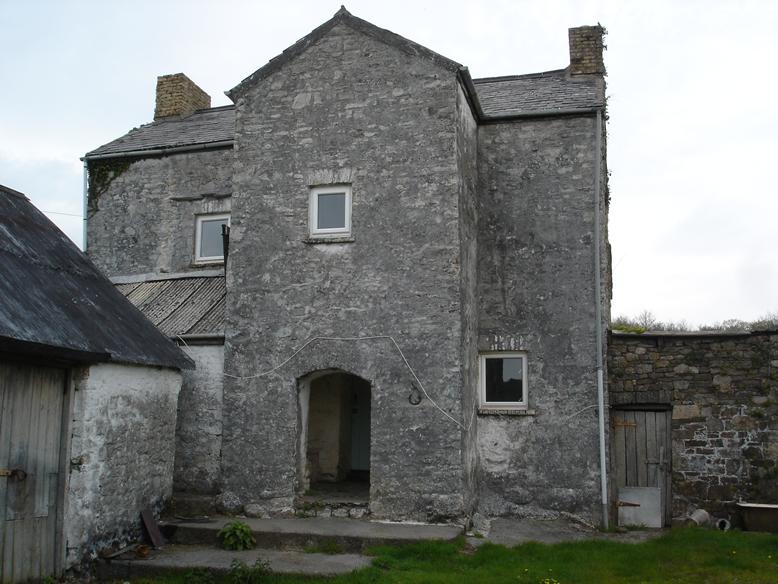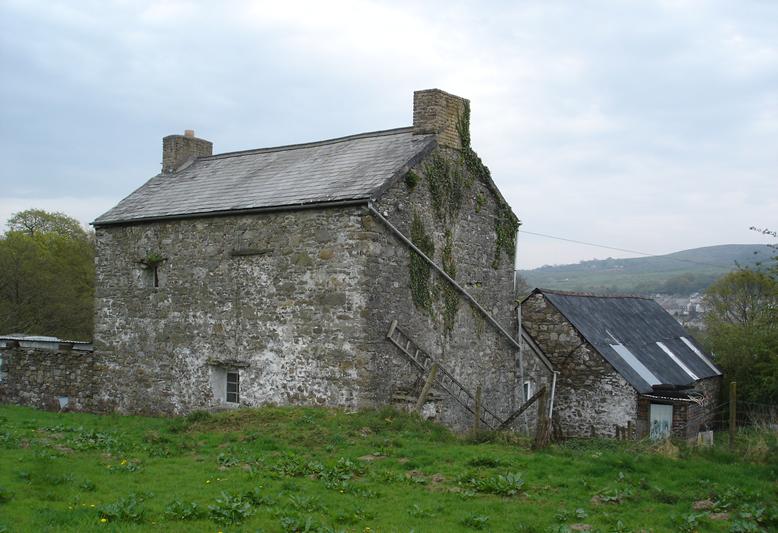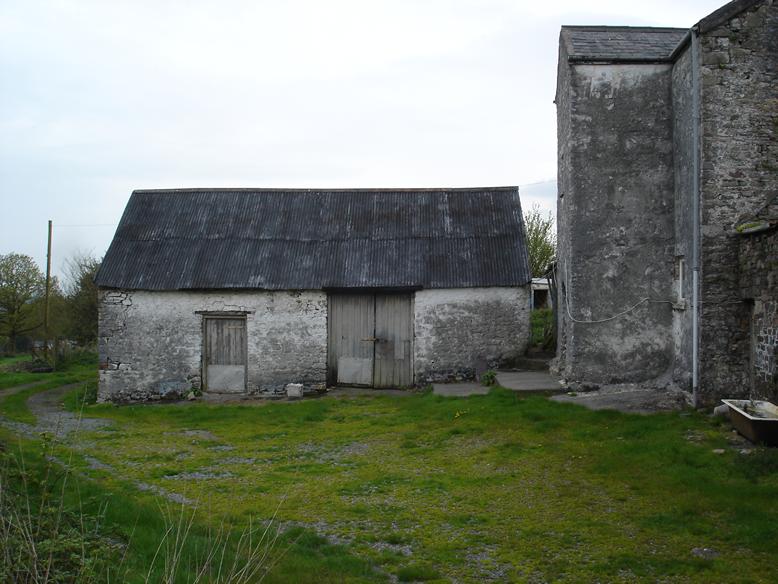Some Captured History of Glanamman and GarnantTy Llwyd, GlanammanTy Llwyd, Glanamman, 2008. Approximately 100 yards east of the entrance to the Amman Valley Hospital, is a path which links Folland Road, Glanamman with Hên Bethel Chapel. Along this path, less than a quarter of a mile from Folland Road, is an old farmstead known as Ty Llwyd (translates as "Grey House"). Local folklore has it that this grade II listed building dates back to Norman times, some even claiming that it is listed in the Doomsday Book. The appearance of the dwelling house and outbuildings is enough to reinforce its reputation and its double storey gabled entrance porch with its low doorway and stone seats is reminiscent of an old Norman Church. Inside the dwelling, old stone flagged floors and a now partly blocked fireplace are almost all it has to offer in the way of home comforts, the very thick walls and small windows keeping the interior dark. Online investigation revealed that the Doomsday Book covered the counties of England but covered none but small parts of Wales on the English border, dispelling immediately, the myth that Ty Llwyd is included among its contents. CADW, the Welsh Assembly Government's historic environment division, have information regarding Ty Llwyd from various sources and were able to provide an estimation as to its true age, as well as information on the architectural style of the building and its features. Their information states that "Ty Llwyd is a well preserved and rare example of a 17th Century two storey gabled porch house of regional vernacular importance." The roof was raised, probably sometime during the late 18th or early 19th century. Ty Llwyd became listed on 9th January, 1998. The Doorway of Ty Llwyd showing the thickness of its walls. So what was it like to live there? A resident of Cwmamman who lived there with her parents during the late 1940's was able to answer that question. At that time, there was no electricity or gas to the property and the domestic water was taken from a nearby stream or perhaps the small reservoir which was sited near the location of the old Ty-Llwyd Colliery. The house was lit by a hurricane lamp, which sometimes frightened her when it flaired up. She remembers walking the dark path home with her parents, one on either side of her, on a winters evening. She also remembered the tin bath, which was placed in front of the fire; as was the custom in all households in days gone by. Ty Llwyd, although situated in a beautiful rural location, was a rather bleak building. Ty Llwyd: rear aspect. To add to it's mystique, the lady remembers a former resident telling her parents of the ghostly sounds, which were a portent of an impending funeral. He claimed that he always knew when someone was soon to be buried at Hên Bethel cemetery, due to the sound of dirges and hymns which he would hear as the ghost funeral procession traversed the path past his front door, heading to the old chapel at night. The telling of this tale was probably nothing more than a bit of fun on the part of the former resident, but who knows what the imagination can stir up in an atmospheric environment such as Ty Llwyd on a dark night. Although they only spent a year or two at Ty Llwyd, neither the lady nor her parents ever heard or saw anything supernatural. Do Ghost Funerals travel this way to Hên Bethel? In the 19th Century, Ty Llwyd was home to Morgan Morgan,
the man who built Christchurch and its Vicarage in Garnant; he was
also the first builder employed to build the large stone bridge at
Llandeilo, which through misfortune, he was unable to complete. Morgan
Morgan was the fifth generation of his family to live at Ty Llwyd,
the first reputedly being Herbert Morgan, who leased the dwelling
during the early years of the industrial revolution. Ty Llwyd is then
said to have passed to Joseph Morgan, Dafydd Morgan, William Morgan,
and finally Morgan Morgan. Morgan's son John, is reputed to have built
theAmman Inn (later known as the Amman Hotel) and the Salutation Inn
(now the Amman United Rugby Club). Thanks to CADW for their contribution. Information taken from the following sources: "Houses of the Welsh Countryside" (London HMSO) 1975, by P Smith. Thanks also to Janet Cross and Mary Beth Dollar for the information on the Morgan family. |



